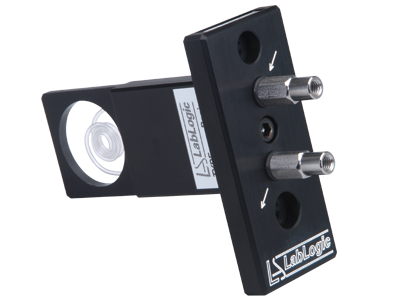For occasional measurement of low energy gamma-emitters, most prominently 125I and 99mTc, LabLogic offers cells which are constructed by sandwiching standard wall Teflon tubing in the shape of a U or coil between thin disks of thallium-activated sodium iodide or BGO scintillator. Backgrounds are low; counting efficiencies for these low energy emitters lie in the 50-65% range.
Because the construction of the β-RAM detector requires that the wafers be thin, they do not have sufficient stopping power for more energetic isotopes whose counting efficiency is therefore low. For the same reason, i.e., even when an event is detected, not all the energy is deposited within the relatively thin wafer; resolution is poor and dual isotope counting is not possible. Therefore, if more energetic gamma-emitters are to be measured, it is preferable to employ a detector such as the γ-RAM with its more massive sodium iodide crystal which has far greater stopping power.
Sodium Iodide Cells for soft gammas (I-125)
- 10 - 200 µl in increments of 50 µL, 120 psi [8 bar] max pressure
- Sodium iodide is deliquescent
- 1/8" thick disks are hermetically sealed in an aluminum shell with Pyrex windows
- Disk assemblies are placed on either side of a Teflon tubing U or coil
- Sodium iodide has greater stopping power than any other material used for this purpose, thereby providing the highest efficiencies and acceptable resolution
- An unusual use for these cells is the coincidence measurement of annihilation radiation from positron decay
- Backgrounds are unusually low and interferences from betas and other gammas are eliminated
BGO Cells for soft-gammas (BGO)
- 10 - 200 µl in increments of 50 µL, 120 psi [8 bar] max pressure
- Standard wall Teflon U's or coils are sandwiched between two disks of BGO scintillator
- BGO is less fragile than sodium iodide but stopping power is less, efficiency is lower, and peak spectra are broader
Documents
Sorry, there are no documents available for this product.


